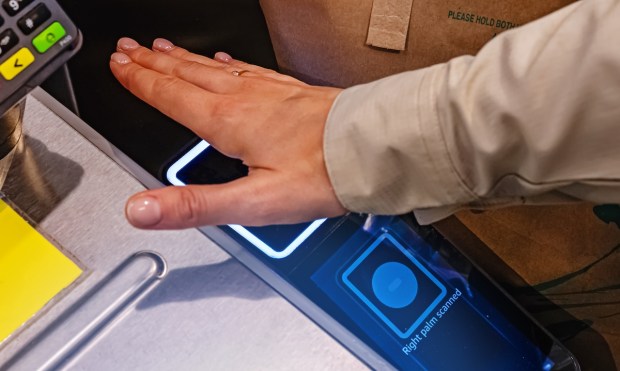Retailers Add Tech to Meet Consumer Demand for Biometric Authentication

With consumers looking for more frictionless authentication, retailers ranging from Whole Foods to Steak ’n Shake are adding biometric payments.
Amazon has been looking to remove friction from its Amazon One pay-by-palm capability, most recently launching an app to make signups easier, per an announcement Thursday (March 28), where consumers could previously only sign up at locations that offered the payment option.
“For retailers, the app ensures faster lines and a more frictionless in-store experience,” Dilip Kumar, vice president of AWS Applications, said in a news release.
Amazon One has been deployed both at the eCommerce giant’s own brick-and-mortar chains such as Whole Foods Market as well as at external merchants such as apparel retailers at the Seattle Kraken’s stadium and restaurant chain Panera Bread.
Overall, biometric payments are becoming more common. Last month, Visa showcased its pay-by-palm biometric payment technology for the urban mobility and retail sectors at the unveiling of its revamped Singapore Innovation Center.
“By combining our expertise with cutting-edge technology and solution architecture, we work alongside our partners to materialize solutions that address payment challenges, driving real business value and growth for our clients,” Stephen Karpin, president of Asia Pacific at Visa, said in a statement.
At the end of last year, an automated burger restaurant opened in California using payment technology from biometric identity verification platform PopID, which enables consumers to pay via face or palm scan. Similarly, casual dining chain Steak ’n Shake also shared last year that it is deploying PopID’s pay-by-face capabilities.
Also last year, J.P. Morgan began testing biometric-based payments at some U.S. retailers.
Consumers, for their part, want biometric authentication. According to PYMNTS Intelligence’s “Consumer Authentication Preferences for Online Banking and Transactions,” nearly half of all consumers had used biometrics — fingerprint, face or voice recognition — to authenticate access to online accounts and payment methods in the month before being surveyed. Of those, 52% cited biometrics as their preferred authentication method.
Moreover, the study found that 31% of consumers view biometrics as the most secure method for authentication, while only 9% of consumers hold the same view of passwords. The data also showed that respondents saw biometrics as slightly more convenient, faster and easier to use than passwords.
Additionally, the September PYMNTS Intelligence report “Tracking the Digital Payments Takeover: Biometric Authentication in the Age of Mobile” revealed that two-thirds of consumers either use or are interested in using biometric identification methods. Eighty percent of consumers using biometric authentication said they use the technologies to make purchases via their mobile devices.
It seems that, for many, biometrics are increasingly becoming the preferred choice for secure and convenient digital transactions.
As biometric payment technologies continue to gain momentum, consumers and retailers alike are embracing the shift toward more seamless and secure authentication methods. With a growing number of consumers preferring biometric authentication for its convenience, speed and perceived security over traditional methods like passwords, it seems these payment technologies will continue to become more popular.
For all PYMNTS retail coverage, subscribe to the daily Retail Newsletter.

